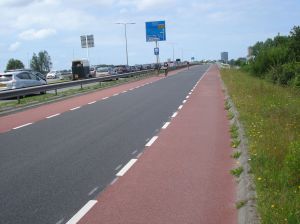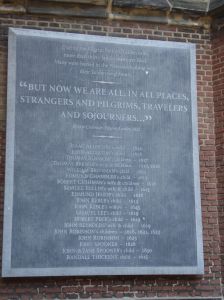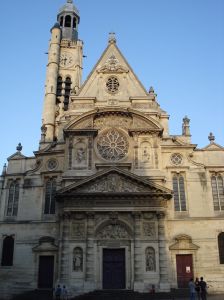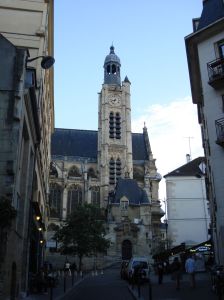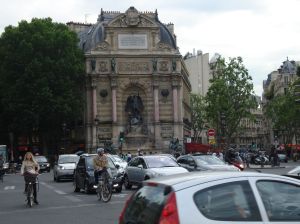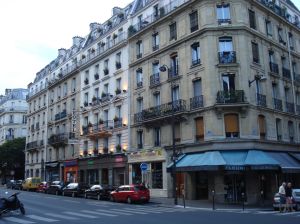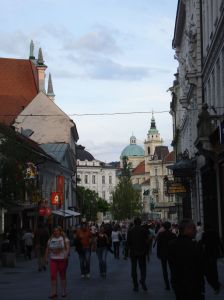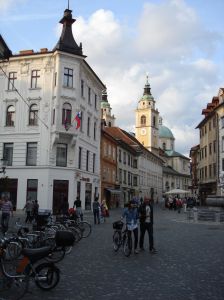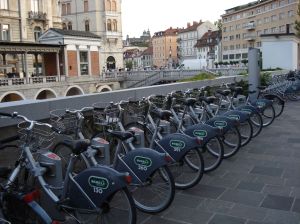There is a story that is popular in mathematical circles, of the young French mathematician Evariste Galois, who had come up with a profoundly original theory of solvability of polynomial equations. Unfortunately, he had to fight a duel (these were the heady days after the French revolution, early nineteenth century, and they did that sort of thing those days in France). So, according to the story, he sat up the previous night and wrote up his theory feverishly in the form of a letter, and sent it off to his friend. He was unfortunately killed the next morning. The story about his writing everything down in a letter before dying, at least in the form the story is generally told and retold, is probably apocryphal, but the theory referred to has turned out to be one of the most profound and most influential theories in mathematics. (It is known, not unnaturally, as Galois theory, and among other things, introduces the objects known as groups that measure symmetry in nature.)
What does all this have to do with this blog? While not quite matching Galois’ talents, I nevertheless feel like young Galois would have felt the night before his duel, assuming the story is right. Not that I have a duel to fight tomorrow, but I do have a flight back to Los Angeles to catch in the morning (and, in these post 9/11 days, one might argue that fighting a duel is easier). So I too must feverishly write up my last report from Europe this trip, and send it off to my friends (via wordpress). Necessarily, it has to be brief. I don’t expect it to have the impact of Galois’ work, but we all have our parts to play in this world: he his theory, me my blog post, be-it-ne’er-so-humble.
Now for the title of this post: Zoetermeer is a small town in the south of the Netherlands. I got here a few nights ago to spend some time with my friend from college Ramesh (aka Yul to those readers who might know him). Now, not only were Ramesh and I in college together, but our fathers, who indeed art in heaven, they both passed away last year, were themselves in college together. Such things create bonds, and so being within three hours of a fast train from Paris, I naturally took that fast train to see him. Owing to his being a free-thinker and choosing to settle in the distant Netherlands instead of in the plain old U.S. of A. like most of the rest of us who graduated from the same college, this also happened to be the first time I was meeting his family. And they were delightful: wife Usha, daughters Meena and Meghna.
The Netherlands is famous among those of us who are obsessed with bicycling (there I said it, yes, I am obsessed, didn’t you notice? 🙂 ) for possessing impressive bicycling infrastructure and as a country where just about everyone bicycles. An extensive network of bicycle paths separated from car traffic criss-crosses the country, making it very easy to go from town to town. Elsewhere, inside towns, clearly marked bicycle lanes (red in color) abound, with their own traffic signals. Children are taught early in school how to bicycle on roads with traffic, and car drivers are given special training on how to share the road with bicycles. Insurance laws routinely favor bicycles: almost always, it is the car driver’s insurance that has to pay for damages caused to a bicyclist. As a result, cycling is relatively safe and immensely enjoyable in the country, and the Netherlands serves as a model for what is possible in the world of non-fossil transport to city planners around the world.
This visit was primarily to spend time with Ramesh and family, so I did not bicycle extensively. Nevertheless, I borrowed a bicycle from Usha today and rode from Zoetermeer to Leiden, a nearby university town, primarily to get a feel for the infrastructure, and for the experience of having ridden in the Netherlands. It was a very enjoyable ride and a very enjoyable afternoon in Leiden (a town, incidentally, that we had all visited the day before as well; Meghna studies medicine in Leiden). I leave you with some photos; I know I will return some day for longer rides through this beautiful country.
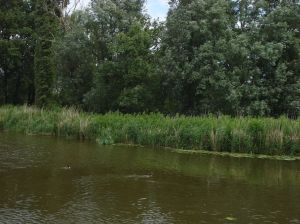
My path from Zoetermeer to Leiden led through pretty countryside. This country is laced with canals of course, and you are never far from large water bodies.
This must be the definition of bucolic. Still on the bike path from Zoetermeer to Leiden.
An example of clearly demarcated bicycle lanes, in red, on either side of a road for motor vehicles, that itself is a frontage road for a highway.
A typical parking lot for bicycles in Leiden. You can have your bicycle impounded if it is parked improperly.
The Rhine, as it flows past the center of Leiden; this region is the Rhine delta. That is the Leiden city hall in the background.
Bridge on the Rhine, in the center of town. My (borrowed) bike briefly graced the railings as well.
Hooglandske church, an impressive Gothic monument in the center of town. It started life Catholic, but is now a Protestant church.
Probably every school child in America knows this, but I learned this for the first time here in Leiden: the Pilgrim fathers didn’t originally plan on emigrating to America from England. Instead, they emigrated to Leiden, and set up shop here for several years, hoping to settle down here. But they were unsatisfied, and from here, decided to check out America instead. Not all made it. Several died right here in Leiden, and the plaque above, by St. Peter’s church (another imposing Gothic building in the town center) you will see a presumably partial list of some of the original pilgrims who died here. (You can double click or use your browser’s expansion capabilities.)

